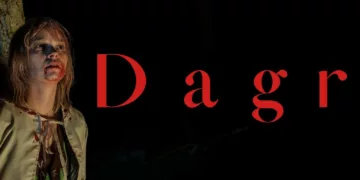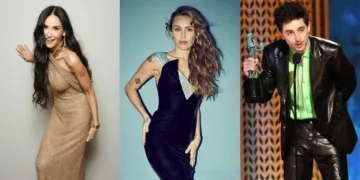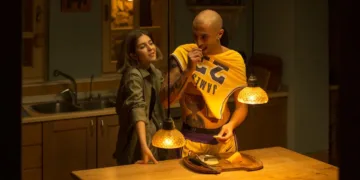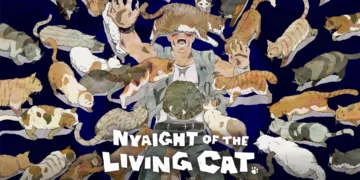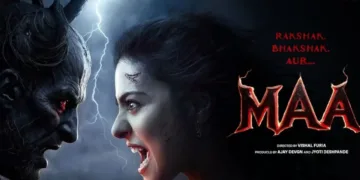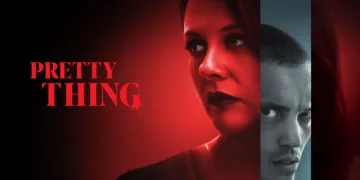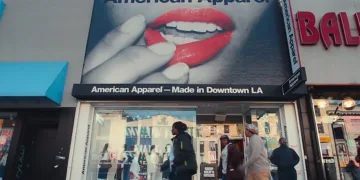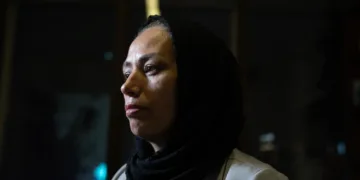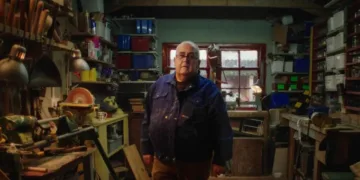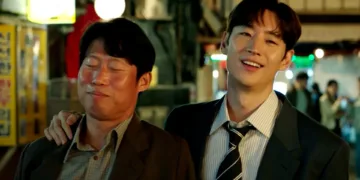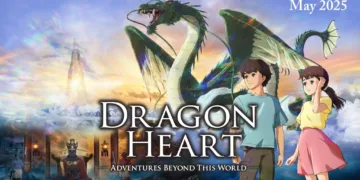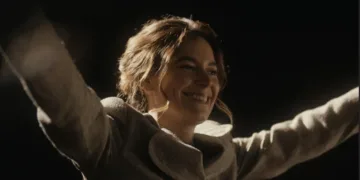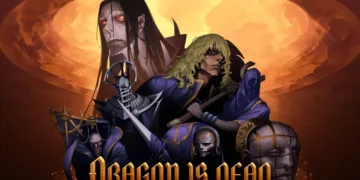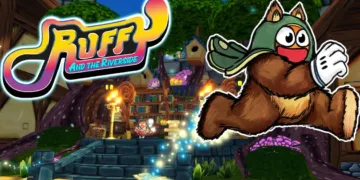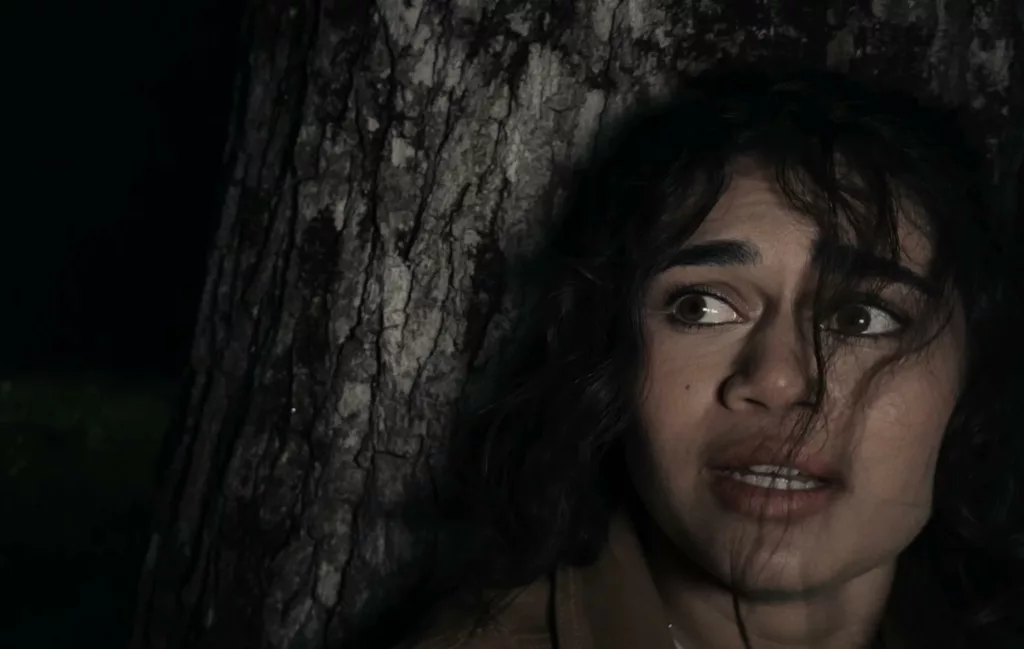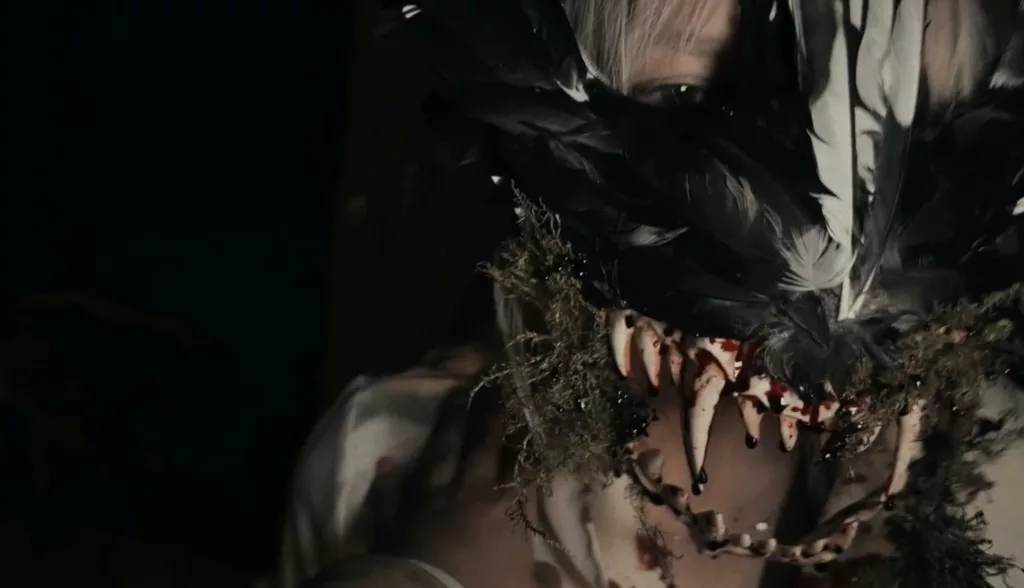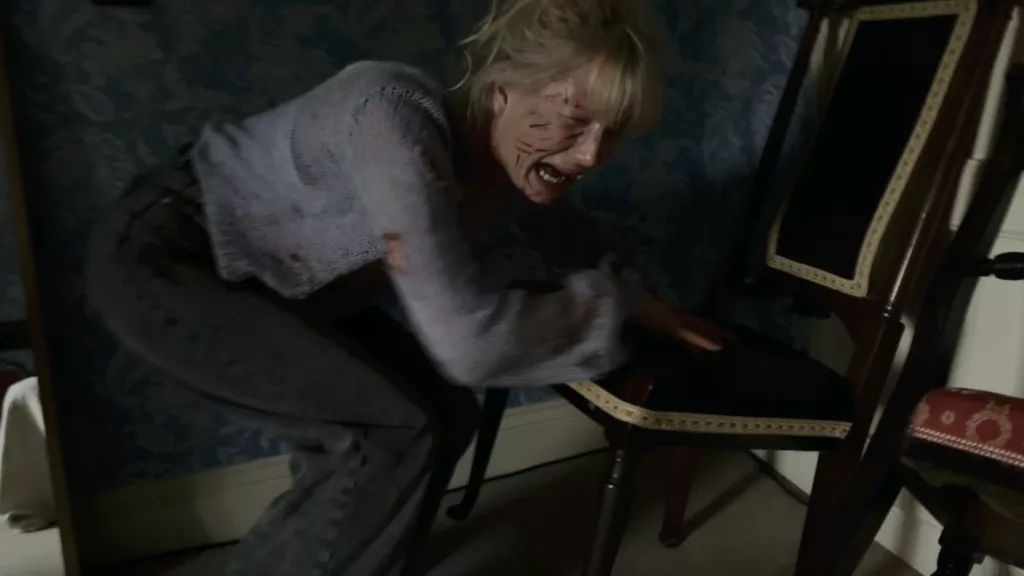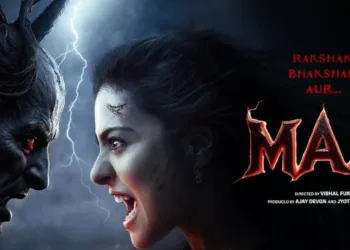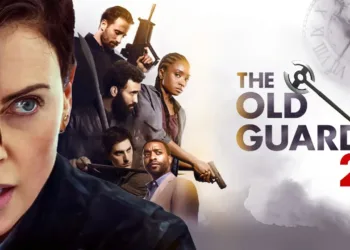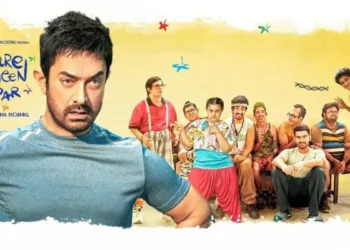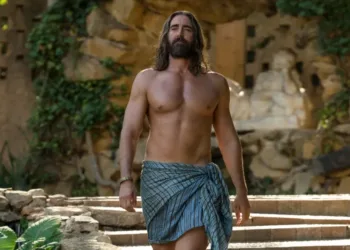British director Matthew Butler-Hart takes viewers on a haunting journey with his latest horror-thriller Dagr. This indie production takes cues from classics like The Blair Witch Project, using the increasingly popular “found footage” technique to draw watchers into the story. As we soon discover, influencers Louise and Thea have far more sinister plans than simply causing trouble at a commercial shoot.
Blending comedy and horror, Dagr lulls us into a false sense of familiarity before unleashing demonic forces in the remote country mansion. Thea and Louise begin as unlikeable narcissists obsessed with themselves and their “Robin Hood” social media persona. But as the supernatural threat emerges, they transform into terrified victims fighting for survival. The story unfolds through fragments of footage, each scene a new piece of the dark puzzle.
Butler-Hart keeps us guessing while ratcheting up the dread, never letting the scares fall into predictable rhythms. Jumping between several groups of characters, Dagr touches on themes of ethics, patriarchy and the digital generation’s thirst for attention. Prepare to laugh at first, then hide behind the cushions as this British indie shows the sinister side of internet fame. Butler-Hart reminds us that horrific evils still lurk in the countryside, waiting to prey on those who mock ancient ways.
Influencers With Deadly Motives
At the heart of Dagr are social media stars Thea and Louise, played with natural charisma by Ellie Duckles and Riz Moritz. On the surface, these Gen Z Robin Hoods steal from the rich to donate to good causes. But their emoji masks hide selfish narcissists desperate for clicks and fame. Thea and Louise fancy themselves righteous vigilantes while shamelessly promoting their brand and mocking “the patriarchy.”
Their camaraderie seems genuine, with Duckles and Moritz trading barbs and quips like old friends. But when the horror descends, the façade cracks. Thea’s facade of breezy nonchalance gives way to raw panic, while Louise unravels into a traumatized wreck. In these unscripted moments of terror, the stellar acting really shines.
On the “evil corporate” side, Tori Butler-Hart plays the exasperated director trying to wrangle her unruly cast. As the calm eye of the storm, she provides a grounded counterpoint before succumbing to the evil herself. Matt Barber and Emma King also impress as the vain actors, nailing the superficiality of the influencer breed. Graham Butler oozes sleazy menace as Tori’s partner Gray. And Hattie Chapman nails comic relief as the beleaguered assistant who can never get her name right.
What’s ingenious about Dagr is how it lulls us into complacency with these unlikeable characters, before the atmosphere chillingly shifts. When the laughs fade and screams begin, we’re locked in, realizing no one is safe from the encroaching darkness. By using light satire to seduce us in, Dagr ensures the plunging horrors hit even harder. Duckles and Moritz carry this tonal shift off brilliantly, their riveting performances selling the slow dizzying descent into literal hell.
A Puzzle Box of Dread
Rather than telling a linear story, Dagr unfolds like a dark puzzle box, each discovered clip revealing more of the sinister picture. We open on Thea and Louise gearing up for their latest “heist,” intercut with the vain film crew they plan to rob. The tone sits somewhere between cheeky mockumentary and thriller, walking a tonal tightrope.
Once at the mansion location, the dread slowly mounts. Ominous smashed mirrors, strange symbols, and talk of pagan rituals hint that darker forces are stirring. Rather than go the expected route with jump scares and gore, Dagr patiently layers atmosphere and mystery. found footage of the shoot, the girls piece together strange occurrences they missed in real time. This nested structure allows shocks to land harder once the evil reveals itself.
Homages to horror classics abound, with references to Psycho, The Exorcist and other influences. Thea even performs Heather’s distraught “I’m sorry” speech from Blair Witch, ironically oblivious to the true nightmares ahead. Die-hard horror fans will delight at picking out these Easter eggs.
At the midpoint, the girls fall victim to the evil entities themselves. The story structure shifts again, into a rollercoaster of set pieces generates white-knuckle suspense. From a terrifying sequence involving a spooky mask to a final showdown in the woods, Butler-Hart shows real directorial chops. The climax centers on an ancient ritual that explains the hauntings, with just the right amount of shocking violence.
While the winding plot can frustrate those accustomed to simpler scares, patient viewers will find the storytelling ambitiously immersive. The device of watching footage already captured builds dread by showing the nightmare steadily encroaching. By the frantic finale, we’re as lost and desperate as the characters themselves. While more accepts style over genuine fright at times, Dagr undoubtedly shakes up overfamiliar genre tropes. This innovative spiritual descendant of Blair Witch carves out its own unique voice through classic techniques. Paying homage while evolving the craft, Dagr signals a horror director to watch in Butler-Hart.
Slicing Into Influencer Culture
On the surface, Dagr skewers the vapidity and narcissism of influencer culture. Thea and Louise fancy themselves righteous thieves, fighting “the patriarchy” through stunts aimed more at themselves than any higher good. Their livestream is aptly titled “They Deserve It, And If They Don’t…F*** It Anyway!”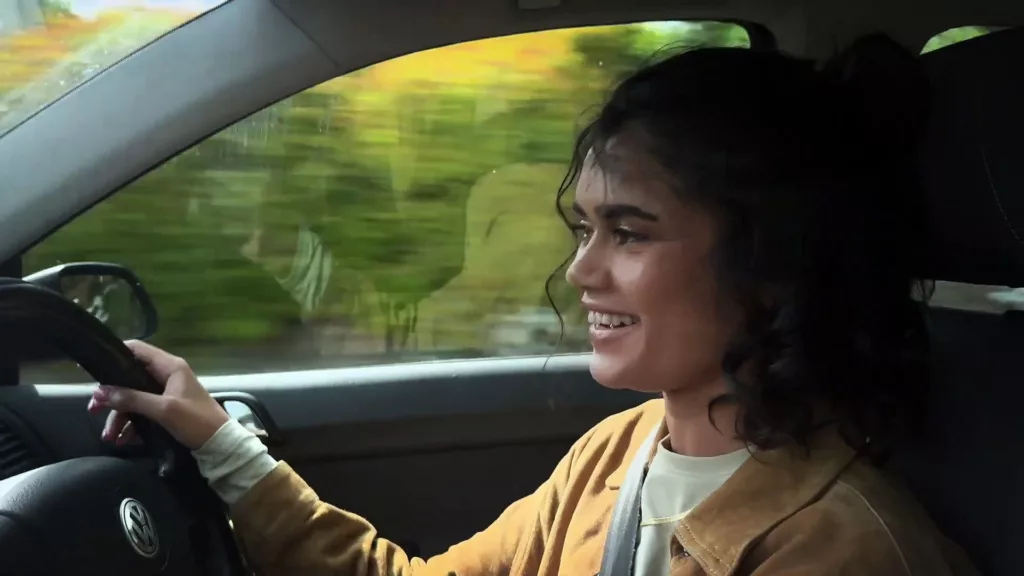
These anti-heroes allow Butler-Hart to satirize the desire for clicks over ethics. When Louise dons an unsettling pagan mask in a shop, Thea fixates on it getting lots of “likes.” Neither considers the ethics of their “pranks,” focused only on manufacturing content.
Beyond this commentary on the digital generation, Dagr also explores more timeless themes. The protagonists’ smug mocking of ancient pagan ways gives way to primal terror when these forces awaken. Serving as a morality tale, Dagr warns that the modern world still cannot fully suppress the darkness dwelling in nature’s shadows. Ancient evils which modern culture ignores still retain their power in the end.
The isolated country mansion serves as metaphor for the brittle facade of the influencers’ world. Behind the glamorous Instagram filters lies vulnerability and emptiness. Stripped of cell service and forced to run for their lives, the facade crumbles – as does their friendship. Louise and Thea descend into suspicion and blame, their bond broken.
Here Butler-Hart reminds us that no bonds can fully withstand trauma, a timeless theme that resonates deeply. While the characters and cultural references modernize horror for the TikTok age, Dagr still channels horror’s eternal allure – the darkness potentially lurking behind any tree, in any shadow. For beneath the snarky satire lies a respect for horror’s primal magic. Dagr may innovate, but the ancient legends it channels still retain their mythic power.
Technical Wizardry On a Budget
Considering its modest budget, Dagr showcases some clever technical innovation. The very structure relies on splicing together various “found footage” to propel the plot. We toggle between the girls’ cameras, the film crew’ shots, surveillance footage and more. Maintaining continuity between these layers adds to the you-are-there immediacy.
The mansion location becomes a foreboding character itself thanks to moody lighting and production design. Ominous symbols scratched into the walls and creepy masks heighten the sinister atmosphere. For much of the runtime Butler-Hart builds spine-tingling dread through subtler cues before unleashing visceral horror in the messy climax.
The director incorporates some ingenious practical effects along with judicious digital enhancement. Scenes of demonic possession and occult rituals required precise editing to notch up the nail-biting tension. Even simple shots take on new power thanks to audio processing. The effect where Louise dons an ancient mask utilizes a wonderful in-camera trick. By hiding the practical mask’s mouth slit just out of frame, the floating white emoji face sells the surreal moment.
Considering the micro-budget, Dagr delivers technical polish beyond its scale. Moments like cameraphones cutting out due to low batteries, shakey shots as characters run for their lives, and stuttering digital artifacts all add to the you-are-there immediacy. The clever unified visual language ties this complex nesting doll of a plot together. Through inventive style and classic tricks, Dagr wrings epic horror thrills from minimal resources.
A New Horror Icon Born
By blending comedy, drama and horror while modernizing the “found footage” style for a new generation, Dagr signals the birth of an inventive new directorial voice in Matthew Butler-Hart. Considering the microbudget, what stands out most is the slick quality and clear vision. The script manages to balance satire of internet fame with slowly encroaching dread, while the complex narrative structure heightens suspense. Matching directorial innovation with solid performances, Dagr delivers an emotionally effective horror-comedy that respects the genre’s roots while daring to evolve its constraints.
Upon first viewing, the winding plot and tonal shifts may frustrate viewers craving basic shocks and gore. But for horror aficionados, Dagr offers rewards in its fearless genre boundary-pushing. Repeated viewings unveil more of the sinister puzzle pieces while allowing Butler-Hart’s talents to shine brighter. Filled with iconic images and sequences, Dagr achieves the crucial benchmark for an enduring cult classic – it sinks its claws in, demanding rewatches.
By daringly announcing itself as the next step in the legacy of Blair Witch, The Exorcist and other touchstones, Dagr could have collapsed beneath its own ambition. Instead, this bravura indie delivers the goods with confident style belying its modest scale. Offering mainstream audiences an accessible gateway to experimental horror via social media satire, Dagr proves the genre can still find new ways to get under our skin when helmed by audacious fresh voices like Butler-Hart. Bursting with menace and magic, Dagr emerges as the calling card of a director poised to leave his mark on horror for decades to come.
The Review
Dagr
With its fresh mixing of horror, comedy, and social commentary, Dagr announces an inventive new directorial talent in Matthew Butler-Hart. Though the winding plot risks losing less patient viewers, patient fans will find an immersive, emotionally resonant thrill ride bursting with stylistic panache. By modernizing classic genre elements for a new age, Dagr overcomes its microbudget through sheer directorial vision. This bravura spiritual descendant of The Blair Witch Project brims with reverence for the past and excitement for horror’s future.
PROS
- Strong directorial vision and stylistic flair from Matthew Butler-Hart
- Clever found footage format and non-linear storytelling builds suspense
- Sharp satire of internet and influencer culture
- Standout performances from lead actors
- Impressive cinematography and atmosphere for a microbudget film
- Homages and references to classic horror films
CONS
- Tonal shifts between comedy and horror may put off some viewers
- The winding plot can be frustrating and confusing at times
- Some horror cliches and jump scares feel predictable
- Supporting characters less developed than protagonists
- Ambitious themes could be explored more deeply
